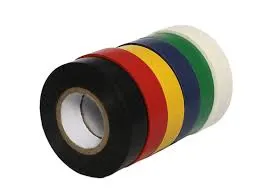The Importance of Floor Line Tape in Various Applications
In various settings—from warehouses and manufacturing plants to gyms and offices—organization and safety are critical. One of the often-overlooked tools that play a significant role in facilitating these aspects is floor line tape. This simple yet effective solution can revolutionize the way spaces are utilized, enhancing both efficiency and safety.
What is Floor Line Tape?
Floor line tape is a type of adhesive tape designed specifically for marking floors. It comes in a variety of colors, widths, and materials, allowing it to be tailored for numerous applications. The most common uses of floor line tape include delineating walkways, marking hazardous areas, creating boundaries for specific work zones, and laying out storage spaces in warehouses. Its versatility makes it a popular choice across various industries.
Enhancing Safety and Compliance
One of the primary reasons for using floor line tape is safety. In environments like warehouses and factories, clear floor markings help reduce accidents. They guide employees and visitors, directing foot traffic along safe paths while keeping them away from dangerous equipment and areas. For instance, in a manufacturing plant, floor line tape can be used to highlight where forklifts operate, ensuring that pedestrians know to stay clear.
Moreover, many industries are required to comply with safety regulations, such as those established by OSHA (Occupational Safety and Health Administration) in the United States. By using floor line tape to create clear visual cues, organizations can demonstrate their commitment to safety and compliance, potentially avoiding fines and improving overall workplace morale.
Boosting Organization and Efficiency
In addition to promoting safety, floor line tape improves organization within a workspace. In a warehouse, for example, strategically placed tape can define specific storage areas, making it easier for employees to find items and reducing time spent searching for products. This not only streamlines operations but also increases productivity.
floor line tape

In office environments, floor line tape can be employed to delineate areas for social distancing—especially important in light of recent health guidelines. By creating clearly marked spaces, employers can help maintain safety while fostering a sense of order and professionalism.
Aesthetic Appeal
Floor line tape isn't just practical; it can also enhance the aesthetic appeal of a space. Many companies integrate their brand colors into the design of their floor markings. This adds a unique touch to the workspace and reinforces brand identity. Additionally, colorful tape can make an otherwise drab industrial environment more inviting.
Easy Installation and Maintenance
One of the best features of floor line tape is its ease of installation. Unlike paint, which can take a long time to dry and requires multiple coats, floor tape can be quickly applied and can adhere to a variety of surfaces, including concrete, wood, and tile. Furthermore, if the markings need to be changed, floor line tape can be removed without damaging the underlying surface, making it a flexible option for dynamic work environments.
Maintenance is also straightforward. Floor line tape is typically resistant to wear and tear, although it may require replacement in high-traffic areas. Simply checking the condition of the tape regularly can help organizations maintain a safe and organized workspace.
Conclusion
Floor line tape is a simple yet powerful tool that can greatly enhance safety, organization, and efficiency in various settings. From factories to offices, the applications of this unassuming product are vast and invaluable. As we continue to prioritize workplace safety and efficiency, the use of floor line tape could become even more widespread. For any organization looking to improve its operational flow and foster a safer environment, investing in quality floor line tape is a step in the right direction. With its myriad benefits, it's clear that floor line tape deserves a prominent place in the toolkit of modern workplace management.
-
XIANGFAN Rubber Tape-Ultimate Solutions for All Your Insulation NeedsNewsJun.24,2025
-
XIANGFAN Rubber Tape-Protection for Industrial and Residential ApplicationsNewsJun.24,2025
-
XIANGFAN Rubber Tape: Superior Safety and Sealing for Demanding EnvironmentsNewsJun.24,2025
-
XIANGFAN Rubber Tape: Reliable Solutions for Every Electrical ChallengeNewsJun.24,2025
-
XIANGFAN Electrical & Industrial Tape: Powering Reliability Across IndustriesNewsJun.24,2025
-
XIANGFAN Electrical & Industrial Tape: Excellence in Every ApplicationNewsJun.24,2025
